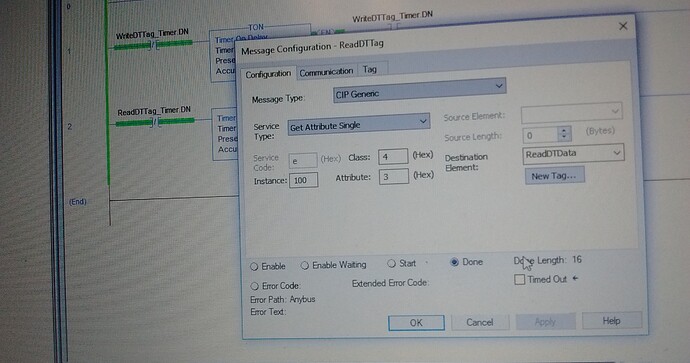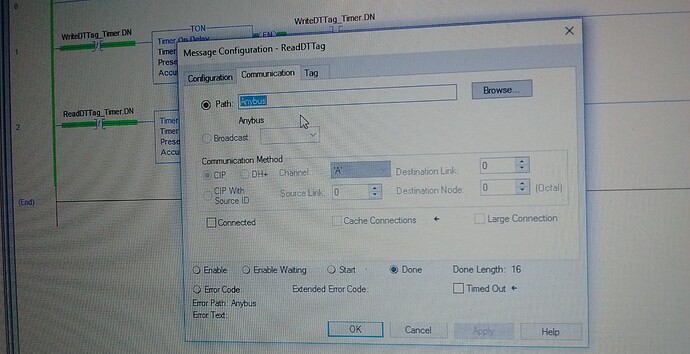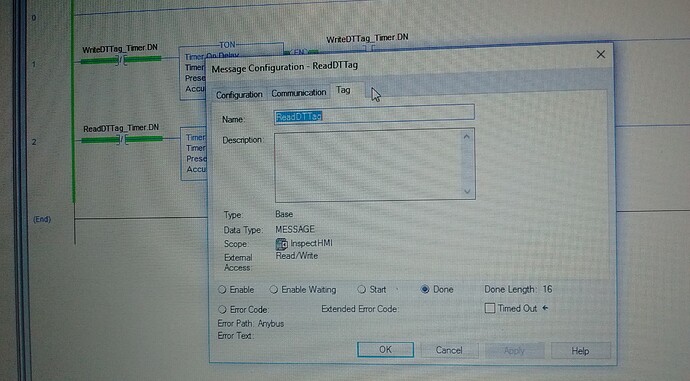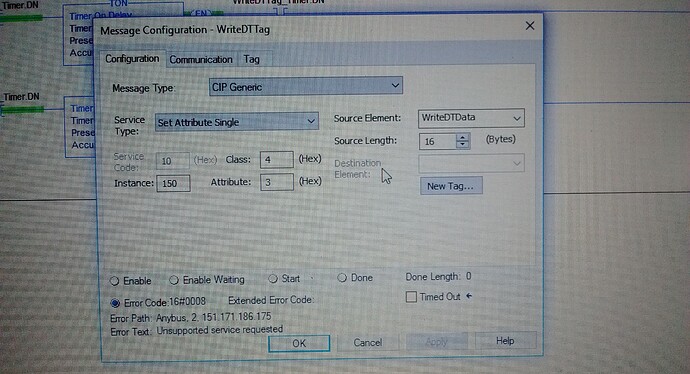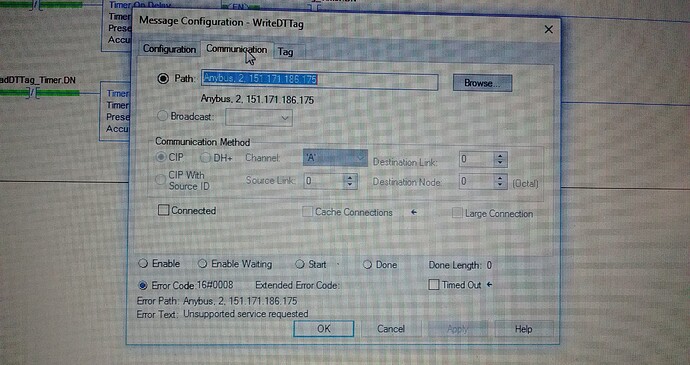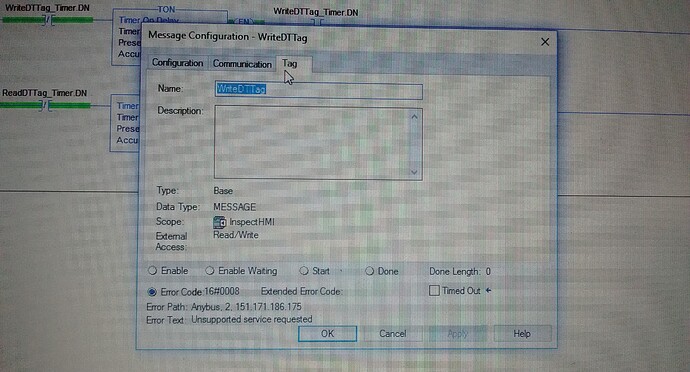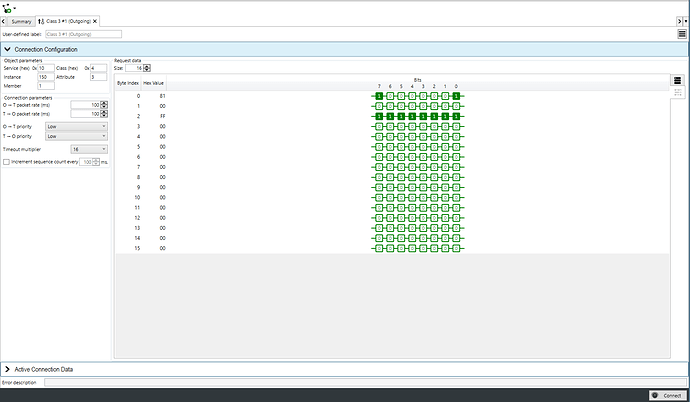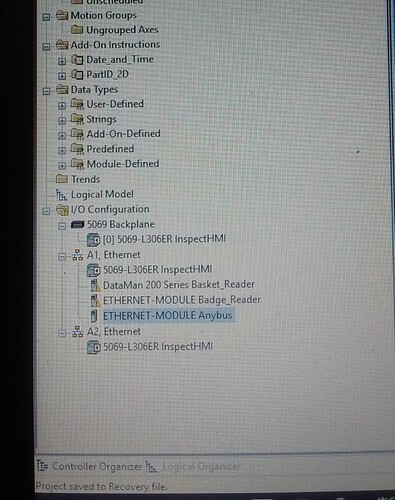Hi,
I am currently working on a project to rollout AB7306 X-Gateways (CANopen Master - Ethernet/IP Adapter) throughout a plant for IO between an AB 1756-L72 Controllogix 5570 controller and a CAN network. I am working with the plant’s PLC engineers to implement communication.
I have been telling them that class 1 (implicit) EIP communications, using a produced/consumed tag, are the preferred way to implement cyclic real-time IO for a device like this, as opposed to class 3 (explicit) communications using an MSG tag, is that accurate? I am basing that on entries like this from your EIP documentation:

If that is the case, are there any specific instructions for setting up produced/consumed tags with an Anybus device? There are instructions for creating MSG tags, which they used, but we couldn’t find anything about implementing class 1 communications.
They originally set things up with the MSG instruction, and as such we are trying to make it work, which we believe it should. Currently, using MSGs, they can read data, but not write it.
Using service 10, class 4, instance 150, and attribute 3 I was able to write to the device using EIPScan, although I did have to disable the run/idle header first for it to work. When we try that same configuration in RSLogix they are unable to write to the device (also with the run/idle header disabled and the Anybus configured for 16 bytes of IO both ways). The documentation for making an MSG tag in RSLogix says on the communications tab to put “,2, AB7306IPAddress” and whether or not we add that it fails to connect. Please see photos below.
Read MSG (which does work):
Write MSG (fails):
EIPScan (works):
Your help is very appreciated. Thank you.

